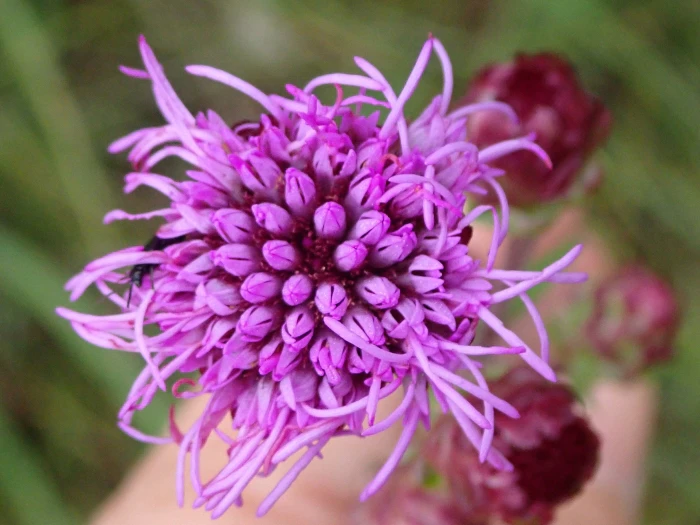Rocky Mountain Blazing Star
(Liatris ligulistylis)
Rocky Mountain Blazing Star (Liatris ligulistylis)
/
/

Mary Krieger
CC BY 4.0













































Estimated Native Range
Climate Requirements for Takamatsu, Japan
| This Plant | Your Site | Plant Suitability for Your Location | ||
|---|---|---|---|---|
| • Precipitation | 9" - 48" | 61" | Aquatic | Aquatic |
| • High Temp. | 63°F - 95°F | 89°F | Your summer temperatures are normal for this plant. | Excellent |
| • Low Temp. | -15°F - 23°F | 34°F | OK, but your winter temperatures are warmer than normal for this plant | OK |
Summary
Rocky Mountain Blazing Star is celebrated for its showy flower spikes that bloom from late summer to early fall. The rounded pinkish-purple flower heads, each containing 30-100 five-lobed, tubular flowers, are arranged in a loose raceme on the upper part of the stem. The flowers are highly attractive to pollinators, especially monarch butterflies, and serve as a host for the bleeding flower moth. In cultivation, this plant is valued for its ease of maintenance, drought tolerance, and ability to thrive in full sun with low to medium water requirements on well-drained soils. It is commonly used in native plant gardens, perennial borders, and as a fresh or dried cut flower due to its long vase life.CC BY-SA 4.0
Plant Description
- Plant Type: Herb
- Height: 1-3 feet
- Width: 0.5-2 feet
- Growth Rate: Moderate
- Flower Color: Purple, Pink
- Flowering Season: Summer, Fall
- Leaf Retention: Deciduous
Growth Requirements
- Sun: Full Sun
- Water: Medium
- Drainage: Fast
Common Uses
Bee Garden, Bird Garden, Butterfly Garden, Deer Resistant, Drought Tolerant, Groundcover, Hummingbird Garden, Low Maintenance, Rock Garden, Showy Flowers, Street Planting
Natural Habitat
Moist meadows, prairie streambanks, and open woodlands
Other Names
Common Names: Northern Plains Gayfeather, Rocky Mountain Blazing-Star, Button Snakeroot, Meadow Blazing-Star, Northern Meadow Blazing-Star, Northern Plains Blazing-Star, Strap-Style Gayfeather, Liatris À Style Ligulé, Rocky Mountain Gayfeather
Scientific Names: Liatris ligulistylis, Lacinaria ligulistylis, Liatris ligulistylis f. ligulistylis, Liatris rosendahlii, Liatris haywardii, Liatris herrickii, Liatris ligulistylis f. leucantha, Lacinaria formosa, Lacinaria herrickii
GBIF Accepted Name: Liatris ligulistylis (Nelson) K.Schum.